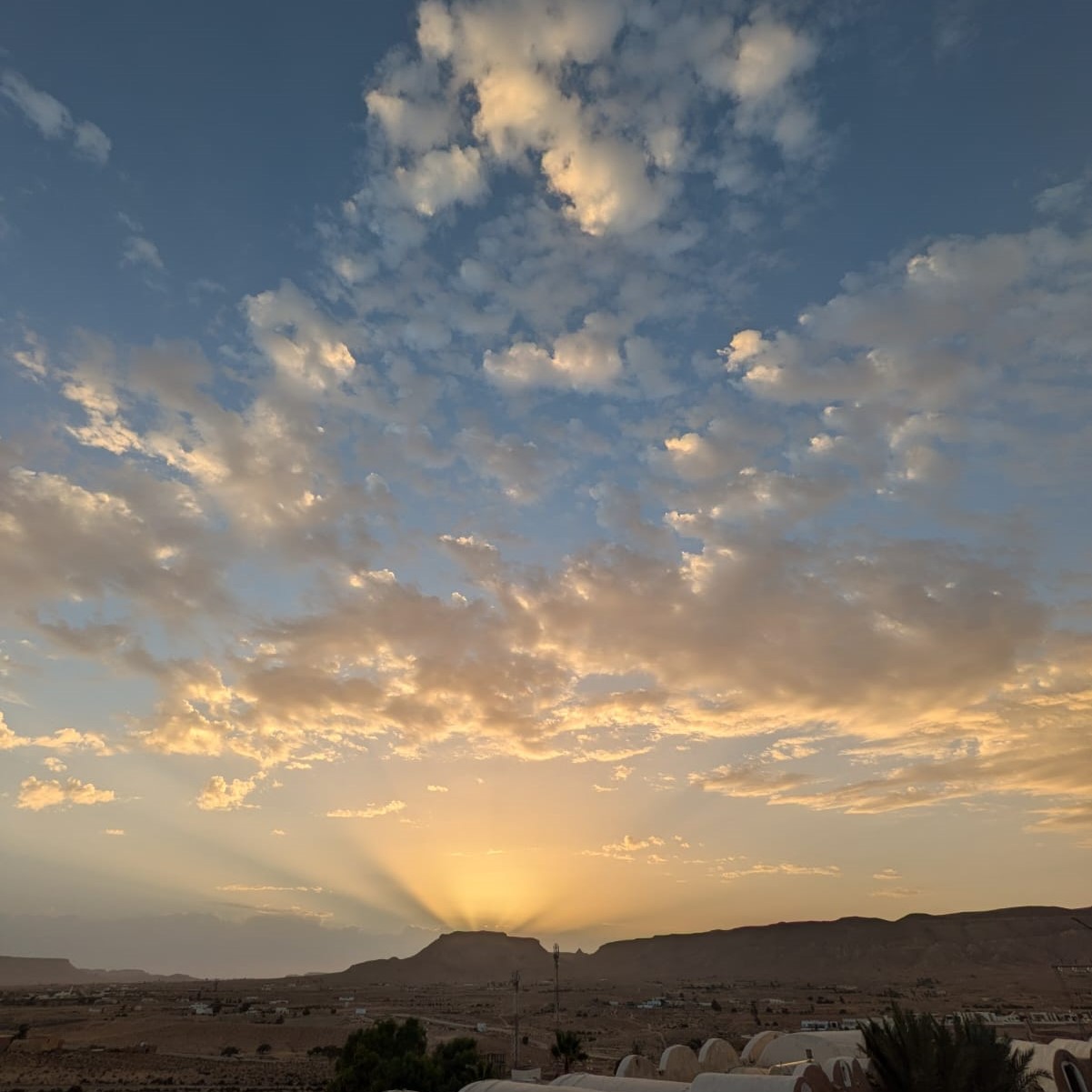Valerie Young (Member 47,755) was traveling in Tunisia, where she saw crepuscular rays with a scattering of the mid-level cloud Altocumulus, appearing in both floccus and castellanus forms. The floccus species of clouds take their name from the Latin word for ‘tuft of wool’. These are the soft-edged bobbles of cloud in the foreground, to the top of Valerie’s image. The larger, slightly lower-altitude Altocumulus appearing in shadow in the lower part of the image are the castellanus species. These are named after the crenellations found on castle walls. Altocumulus castellanus is one of the harder cloud formations to spot, but take a close look, and you might just be able to make out along the top of these shaded clouds the towers and turrets characteristic of this species. And what of the crepuscular rays?
They’re the sunbeams splaying out due to the effect of perspective as shafts of light and shade are rendered visible by atmospheric haze: tiny airborne particles, perhaps dust, scattering the light. The shadows of Valerie’s rays were cast by a bank of tall clouds visible on the horizon beyond the mountains. The Tunisian desert was used for filming in the Star Wars movies the scenes on the planet Tatooine. That fictional desert planet had two suns in the sky. Cloudy sunsets like this would presumably appear as a lattice of interwoven crepuscular rays.



